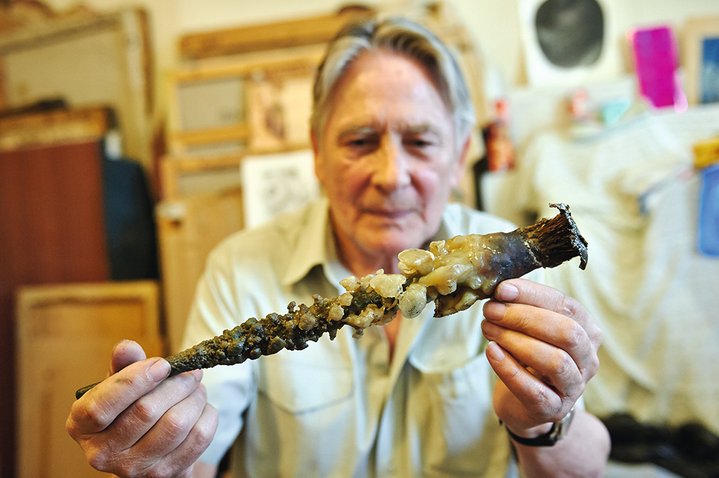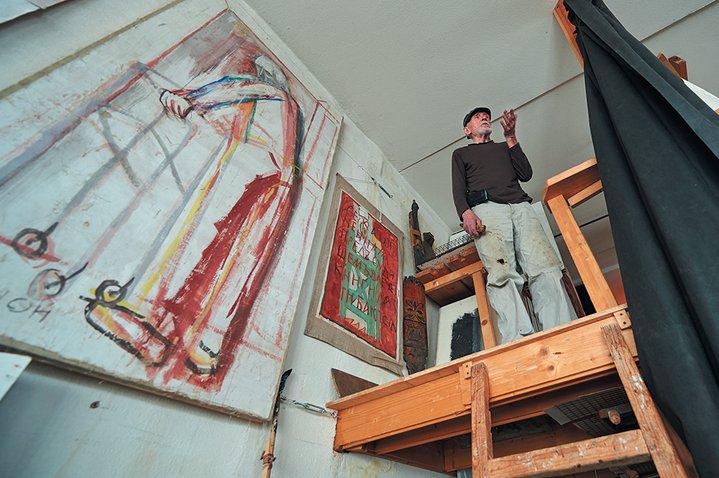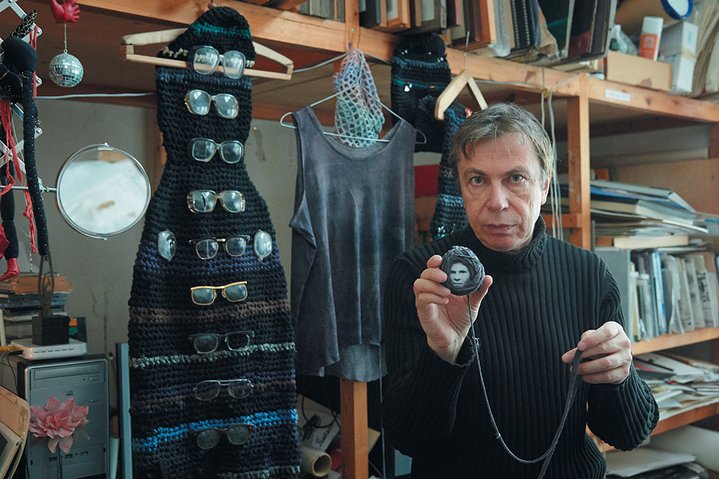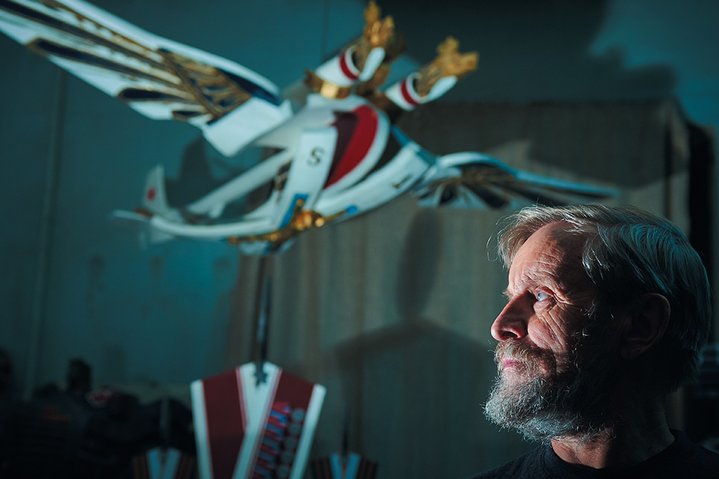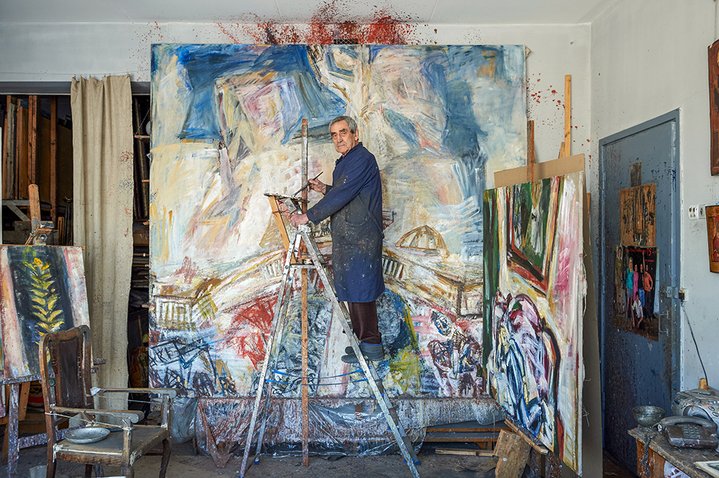Raul Skrylev: peeping into artists studios through a small aperture

The camera of Russian photographer Raul Skrylev allows us to look inside the studios of 33 Russian contemporary artists.
Just as long as there has been curiosity about the lives of artists, their studios have served as a metaphor of their creativity. Thanks to Raul Skrylev’s photography, Moscow has its own keyhole into the creative lives of artists who came of age between the 1960s and the 1980s. What began as an album of photographs of 11 artists in their studios has now turned into an exhibition and a multi-volume book. The third volume appeared in late 2019 and a fourth is in the works. ‘Masterskaya Khudozhnika’ (“The Artist’s Studio”) give readers an otherwise inaccessible view of how 33 Moscow artists live, party and create.
Skrylev found his photographic vocation in 2006, nine years after finishing a degree in painting restoration at the Stroganov Higher College of Art in Moscow. It was only in 2008 that he began using photographs to explore the relationship between artists and their workspaces.
In a recent conversation, Skrylev described his process of working with artists in some of their most private spaces. Prior to any meeting, he studies an artist’s work to form an understanding of his or her interests. The rest proceeds in situ. “Creating an image of an artist is always a joint process… I am a supporter of naturalness and sincerity, so I do not use additional lighting devices or ‘special effects’,” he explains.
‘The Artist’s Studio’ includes many lively pictures, ranging from the colourful paint-splatter gloves of Rostislav Lebedev (b. 1946) to semi-formal portraits, such as one of artist Natalia Nesterova (b. 1944) standing among her easels, dried flowers, paper stacks and an empty birdcage. Such images brand the studio as a sacred space of solitude. “This is neither a photo album nor an academic text,” Skrylev emphasizes. “These are living stories about the artists in their studios.” A project that celebrates individual authors raises the question of whether its aim is to document art or to become it. Indeed, Skrylev seems keen to diffuse his own role in the book. A brief biography of the photographer appears only in the second volume’s last pages.
In conversation, he makes it clear that his role is to prevent his photos expressing an opinion, except by virtue of what the artists themselves portray. He and the art historian Olga Thomson select artists for inclusion in this Moscow catalogue. Very democratically, each artist gets the same standard-length profile in the book. Yet, Skrylev is also sensitive to his role as a mediator between the artist and the viewer: “I act as a promoter of the artist’s work…it is my task to find and establish a visual, logical connection between him and his works.”
To some extent, the image of the solitary studio is of course a romantic myth. Even if Skrylev’s subjects produce works by their own means, there are also assistants who work in the studios on administrative or productive tasks. Historically, the studio has not only been a remove from the workaday world but has also created a social life. For example, two of the artists in Skrylev’s catalogue, Lebedev and Boris Orlov (b. 1941), turned their studio on Rogov Street into a centre for unofficial culture and the Sots-Art movement in Moscow.
Skyrlev’s most successful images manage to create a fusion that binds the artists, their work and the studio space in peaceful coexistence. Francisco Infante-Arana (b. 1943) and Nonna Goryunova (b. 1944), two artists who have since the 1960s used landscapes to create art works are captured by the photographer with a kinetic construction in the snow – and at their computer.
What does Skrylev’s own studio looks like, you may wonder? Appropriate to his work but not worthy of the camera’s eye, the photographer insists. “I work in the smallest room of my apartment. It measures 11 square meters. I don’t need a lot of space, just enough for my computer. I like the coziness of being surrounded with books and art by my friends.”







